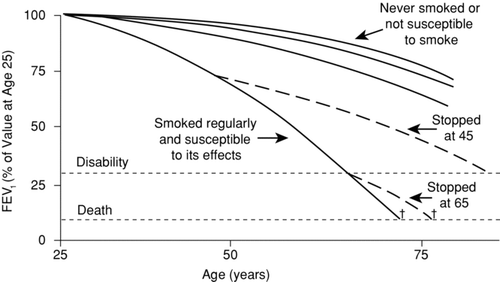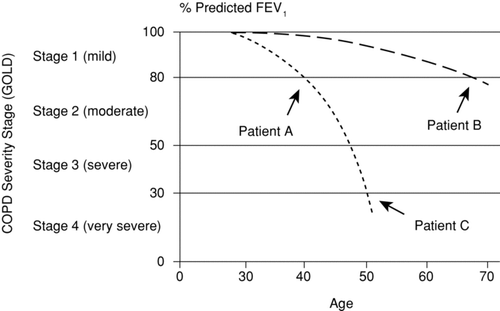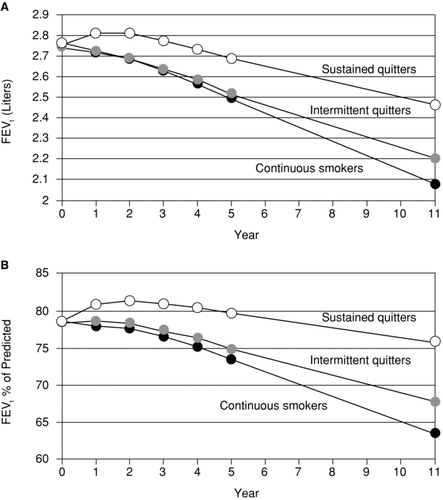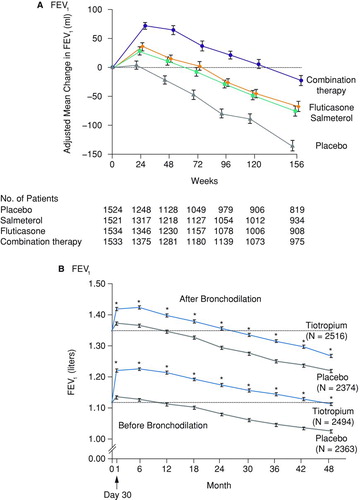Figures & data
Table 1. GOLD spirometric classification of COPD according to FEV1.2
Table 2. Systemic manifestations and common co-morbidities in COPD (34).
Figure 1. Progression of airflow limitation in COPD (4). Abbreviations: COPD, chronic obstructive pulmonary disease; FEV1, forced expiratory volume in 1 sec. Reproduced from Fletcher C, Peto R. The natural history of chronic airflow obstruction. Br Med J 1977 Jun 25; 1(6077)1645–1648, with permission from BMJ Publishing Group Ltd.

Figure 2. Severity staging and natural history of COPD.44 Grouping by FEV1 would put together patient A (40 years old with a rapid rate of decline) and patient B (70 years old with a slower rate of decline). Conversely, patients of different ages with rapid disease progression (patients A and C) may have more features in common than patients with the same FEV1 percent of predicted and different rates of progression. Abbreviations: COPD, chronic obstructive pulmonary disease; FEV1, forced expiratory volume in 1 sec; GOLD, Global Initiative for Obstructive Lung Disease. Reprinted from Rennard SI, Vestbo J. Natural histories of chronic obstructive pulmonary disease. Proc Am Thorac Soc 2008 Dec 15; 5(9):878–883, with permission of the American Thoracic Society. Copyright © 2012 American Thoracic Society. An official publication of the American Thoracic Society.

Figure 3. An example of a rate-altering disease modification: smoking cessation. In the Lung Health Study (49), sustained quitters had a reduced rate of the loss of lung function in comparison to intermittent quitters. Reprinted from Anthonisen NR, Connett JE, Murray RP. Smoking and lung function of Lung Health Study participants after 11 years. Am J Respir Crit Care Med 2002 Sep 1; 166(5):675–679, with permission of the American Thoracic Society. Copyright © 2012 American Thoracic Society. Official Journal of the American Thoracic Society.

Figure 4. Examples of status-altering disease-modifying therapies. Lung function in the TORCH50 (a) and UPLIFT51 (b) studies. Abbreviation: FEV1, forced expiratory volume in 1 sec. Reproduced by permission from (a) Calverley et al. (50) and (b) Tashkin et al. (51). Copyright © 2010 Massachusetts Medical Society. All rights reserved.

Table 3. How good are we at modifying COPD?